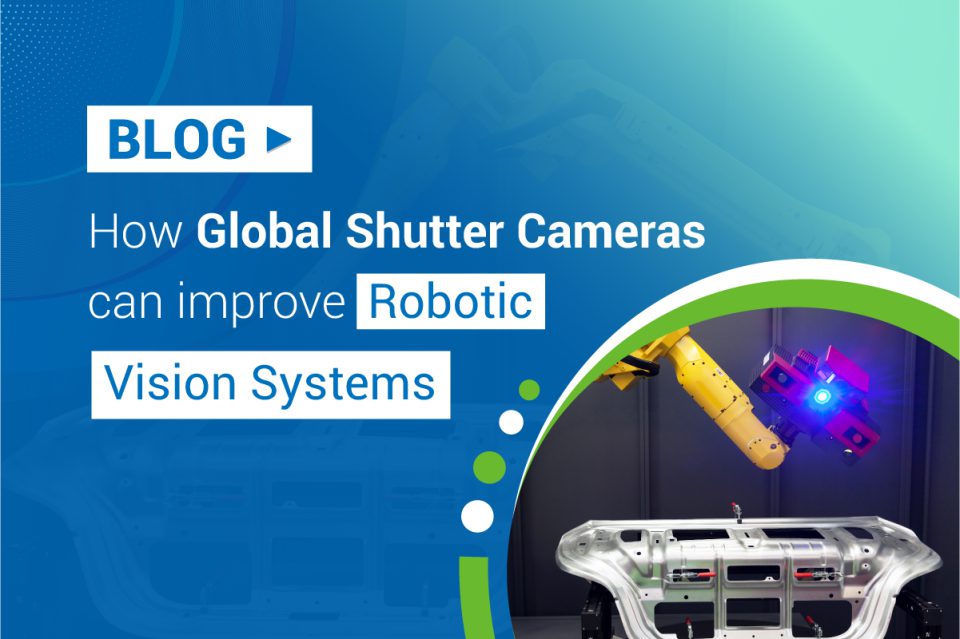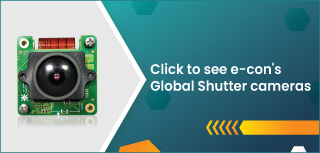In any robotic vision system, the sensor tends to be the heart of the camera. Generally, the two types of sensors are Charged Coupled Device (CCD) and Complementary Metal Oxide Semiconductor (CMOS). As far as speed is concerned, CMOS-enabled global shutter cameras can read out even 100X faster than CCD!
Each of these sensors comes in two variants – rolling shutter or global shutter. Now, this begets questions like “What is the difference between rolling shutter and global shutter image sensors in vision system?” or “Which of them is better for robotic vision systems?”
Before jumping to any conclusions, let’s first discuss in detail the differences between rolling shutter and global shutter image sensor.
Difference between Rolling Shutter and Global Shutter Image Sensor
Rolling Shutter: An image sensor with a rolling shutter exposes different lines of the array at different times – as the ‘read out’ wave sweeps through the sensor.
Global Shutter: An image sensor with a global shutter allows all the pixels to accumulate a charge with the exposure – starting and ending at the same time. At the end of exposure time, the charge is read out simultaneously. For instance, have a look at the below illustration to understand the difference between how readout happens in rolling shutter and global shutter sensors.
Rolling Shutter Global Shutter
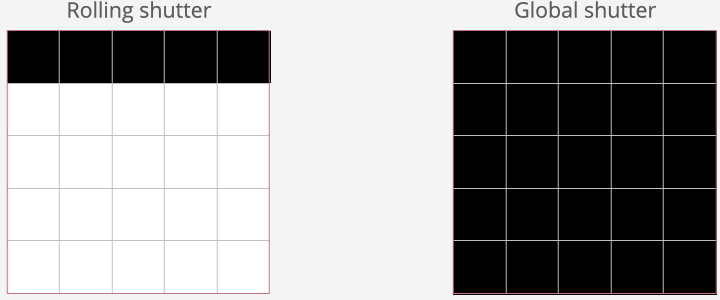
If you wish to learn more about the difference between a rolling shutter and global shutter sensor, visit What are Global Shutter and Rolling shutter? How to choose the one that fits the application?
While this article is more focused on robotic vision, the above one will give you a broader perspective.
In the realm of robotic vision, CMOS sensors that feature the global shutter are known for enabling sharp images of fast-moving objects. It’s because all the pixels are exposed at the same time.
Best-suited for Robotic Vision: Rolling Shutter or Global Shutter?
Many new-age robotic applications are dependent on vision technology to get things done. For example, vision technology helps in picking and placing different objects, handling multiple objects arriving at the workplace in different orientations, or rapid changeovers when switching between objects.
Watch the video below to better understand how you can choose the right imaging solution to capture the images of moving objects– whether a rolling shutter or a global shutter camera.
Hence, it’s evident that the global shutter sensor is better since it captures the images in a single moment of time. There’s no need for rolling or scanning, as would be the case while capturing images in the rolling shutter. Therefore, with the global shutter sensor, there is no room for blurring, skewing, and spatial in captured images.
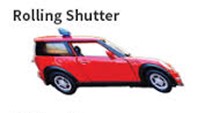
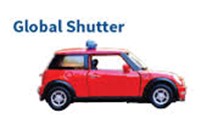
It’s also important to note that the sensors with the global shutter will have a larger image format, leading to complicated circuit designs. Thus, it will drive up the overall camera costs. However, the global shutter improves the vision system of robots by providing a higher frame rate, resolution, etc.
Influential Factors of Global Shutter Cameras in Robotic Vision
Let’s look at some of the factors that influence global shutter cameras to enhance robotic vision systems.
- Higher Frame Rates – Global shutter cameras capture images at a high frame rate, which helps to minimize frame-to-frame distortion and reduce motion blur while capturing fast-moving objects. And they can easily extract clear details of the scene.
- Higher Resolution – Global shutter cameras provide a large Field of View (FOV) and small pixels. It helps them maintain high-resolution imaging.
- Increased Efficiency – Global shutter cameras capture precise information of moving imaging objects at high speed. They allow the production lines to move faster and operate at increased efficiency.
- Reduced Power Consumption – Global shutter cameras eliminate motion artifacts and blurring issues. They provide high quantum efficiency and excellent near-infrared (NIR) sensitivity, which reduces the power consumption and extends the battery life.
Application of Global Shutter Cameras in Robotic Vision
The implementation of global shutters in cameras may take time, but it provides higher resolution with fast frame rates. The global shutters are perfect for applications where slightly higher levels of readout noise will not impact the accuracy or reliability of imaging since the simultaneous exposure and ‘read out’ does not create image distortion when capturing fast-moving objects.
The high frame rates, resolution, and performance of the global shutter sensors make them ideal for applications such as high-end machine vision, aerial applications, industrial automation, warehouse robots, and so on. Let’s see the major applications of global shutter cameras in robotic vision.
Aerial Imaging – Using a rolling shutter sensor on drones causes image distortion. It happens because while capturing images, the shutter position moves during the exposure time. This distortion will influence the level of accuracy. Whereas in the global shutter, all the pixels start and stop exposure at the same time, which completely solves this issue. So, the drone will be less restricted in speed and movements while still producing distortion-free images.
High–End Machine Vision – Leveraging CMOS global shutter solutions is ideal for high-end machine vision applications. Some of its competitive advantages include high resolution, global shutter, and fast frame rates. The high-resolution capability of global shutter cameras makes it possible to either increase the total inspection area or choose more visible details. Compared to other sensors, the global shutter provides a gain of up to 12 times in area or detail!
Warehouse Robots – The global shutter sensor facilitates the reading of barcodes with precision. It makes the detection of objects both simple and accurate. By enabling 3D volume measurements, they can quickly capture precise images of fast-moving or far away objects while consuming very little power- along with zero motion blur.
With all this information in hand, now you know which variant is better to empower robotic vision systems. Having said that, it is equally crucial to work with an embedded vision partner who can provide cutting-edge CMOS global shutter cameras. Without the right expertise, it will be extremely difficult the ROI of any robotic vision applications. Write to marketing@e-consystems.com and fix a meeting with one of our embedded vision experts who can guide you to drive memorable robotic vision experiences.
Related cameras
- See3CAM_24CUG – Full HD Color Global Shutter Camera
- See3CAM_20CUG – 2MP Global Shutter Monochrome Camera
- See3CAM_10CUG – 1.3 MP Global Shutter USB3 camera
- eCAM24_CUNX – Global shutter Camera for NVIDIA® Jetson Xavier™ NX / TX2 NX / Nano
- e-CAM25_CUXVR – Six Synchronized Global Shutter Cameras for Jetson AGX Xavier™
- STURDeCAM25_CUXVR – IP67 GMSL2 Global Shutter camera for Jetson AGX Xavier™




